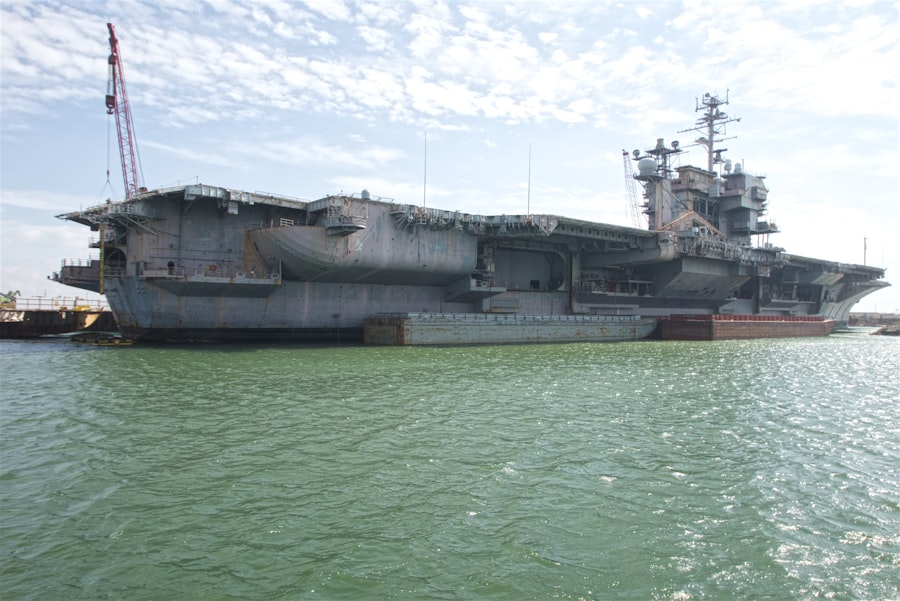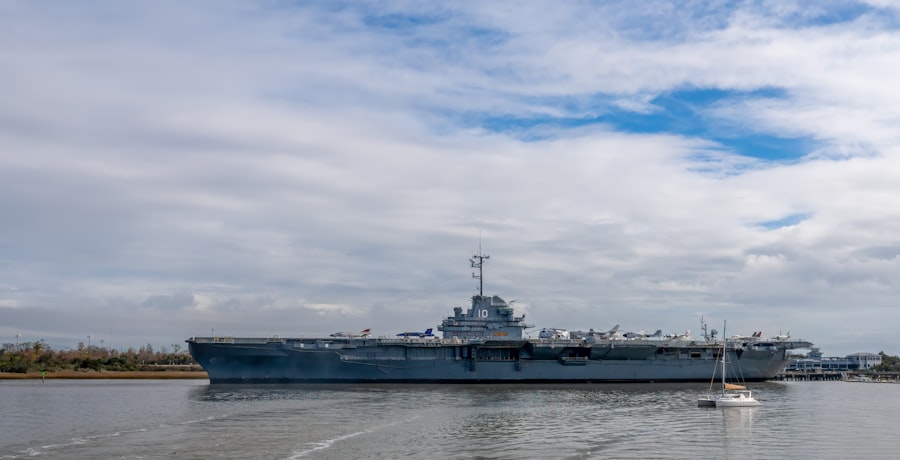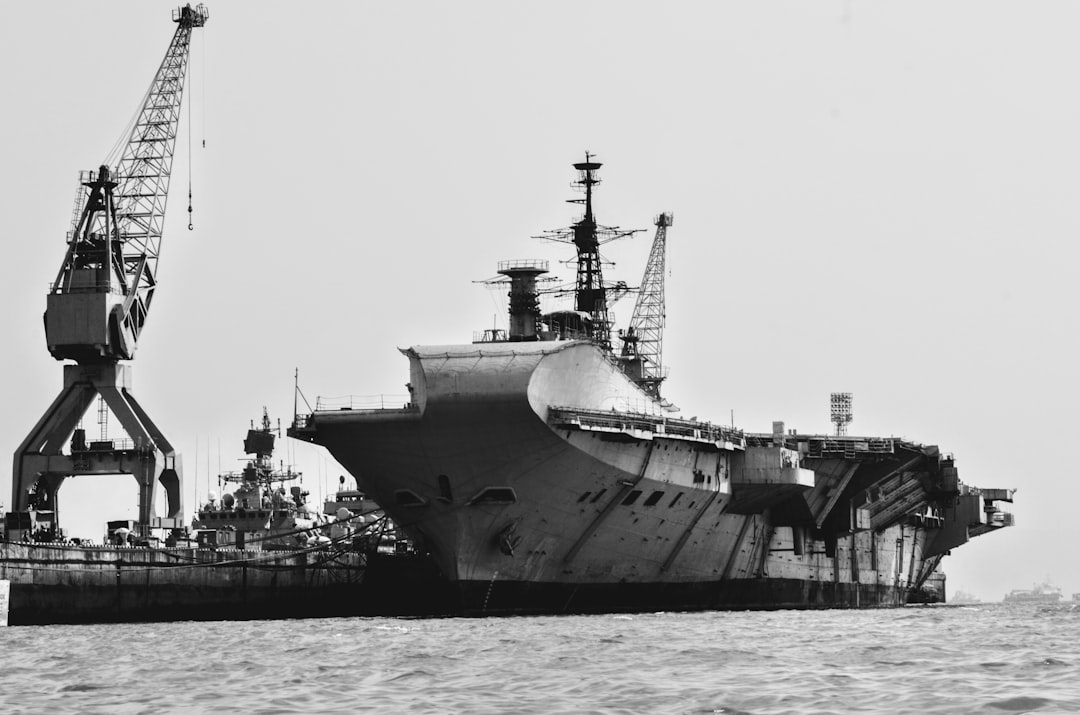The Drake Passage, a body of water located between the southern tip of South America and Antarctica, is renowned for its tumultuous seas and unpredictable weather patterns. Spanning approximately 800 kilometers (500 miles) in width, this passage serves as a critical maritime route for vessels traversing the Southern Ocean. Named after the English explorer Sir Francis Drake, who navigated these waters in the late 16th century, the Drake Passage has long been a focal point for maritime exploration and scientific research.
Its unique geographical position not only connects the Atlantic and Pacific Oceans but also plays a significant role in global oceanic currents and climate. Navigating the Drake Passage is no small feat, as it is infamous for its rough seas and strong winds. The confluence of the Atlantic and Pacific Oceans creates a dynamic environment that can lead to sudden storms and high waves, making it a challenging route for even the most experienced mariners.
Despite these challenges, the passage remains a vital corridor for various types of vessels, including research ships, fishing boats, and military carriers. Understanding the intricacies of this waterway is essential for those who seek to navigate its unpredictable waters, particularly when it comes to large vessels like aircraft carriers.
Key Takeaways
- The Drake Passage is a body of water between South America’s Cape Horn and the South Shetland Islands of Antarctica.
- Navigating the Drake Passage presents challenges such as extreme weather conditions and rough seas.
- Aircraft carriers typically follow a route through the Drake Passage to reach the Pacific or Indian Oceans.
- The suitability of the Drake Passage for aircraft carriers depends on factors such as weather patterns and ice conditions.
- Historical use of the passage by aircraft carriers has demonstrated both advantages and disadvantages.
The challenges of navigating the Drake Passage
The challenges presented by the Drake Passage are manifold and can be daunting for any vessel attempting to traverse its waters. One of the most significant obstacles is the unpredictable weather, which can change rapidly from calm to stormy conditions within a matter of hours. The passage is notorious for its high winds, which can reach speeds of over 60 knots, creating treacherous waves that can tower up to 15 meters (50 feet) in height.
Such conditions not only pose risks to navigation but also threaten the safety of crew members and the integrity of the vessel itself. In addition to the weather, the geographical features of the Drake Passage contribute to its navigational challenges. The presence of underwater ridges and shifting currents can create hazardous conditions that require constant vigilance from ship captains and their crews.
Navigators must be adept at reading charts and understanding oceanographic data to avoid potential hazards. Furthermore, the isolation of the passage means that assistance may be far away in case of an emergency, adding an additional layer of risk for those who dare to navigate these tumultuous waters.
The route of aircraft carriers

Aircraft carriers are among the largest and most complex vessels in naval fleets, designed to project power and provide air support in various military operations. When it comes to their routes, aircraft carriers typically follow established maritime pathways that ensure safe passage while maximizing operational efficiency. The route through the Drake Passage is one such pathway that has garnered attention due to its strategic importance in military operations in the Southern Hemisphere.
The journey through the Drake Passage allows aircraft carriers to access critical areas in both the Atlantic and Pacific Oceans. This capability is particularly important for naval forces seeking to maintain a presence in international waters or respond to emerging threats in regions such as South America or Antarctica. However, navigating this route requires careful planning and coordination, as aircraft carriers must account for their size and maneuverability limitations while also considering environmental factors that could impact their journey.
The suitability of the Drake Passage for aircraft carriers
| Metrics | Drake Passage Suitability |
|---|---|
| Weather Conditions | Challenging due to strong winds and rough seas |
| Icebergs and Ice Conditions | Potential risk of encountering icebergs and ice floes |
| Water Depth | Deep enough for aircraft carriers to navigate |
| Geopolitical Considerations | No territorial disputes or restrictions for passage |
| Distance from Ports | Remote location with limited access to ports for supplies and repairs |
While the Drake Passage offers a strategic route for aircraft carriers, its suitability is often called into question due to the inherent challenges associated with navigating these waters.
Additionally, the passage’s unpredictable weather patterns can lead to delays or even force carriers to alter their routes entirely.
Despite these challenges, some military strategists argue that the Drake Passage remains a viable option for aircraft carriers under certain conditions. With advancements in navigation technology and improved weather forecasting capabilities, modern naval forces are better equipped to handle the complexities of this passage. Moreover, the strategic advantages offered by access to both oceans may outweigh the risks associated with navigating through such a tumultuous environment.
Historical use of the passage by aircraft carriers
Historically, the Drake Passage has been utilized by various naval forces as a means of accessing critical operational theaters. During World War II, for instance, aircraft carriers were deployed through these waters as part of broader military strategies aimed at securing dominance in both the Atlantic and Pacific Oceans. The passage served as a vital link for naval operations, allowing forces to reposition themselves quickly in response to changing geopolitical dynamics.
In more recent years, aircraft carriers have continued to traverse the Drake Passage as part of joint military exercises and humanitarian missions. These operations highlight the ongoing relevance of this maritime route in contemporary naval strategy. However, historical accounts also serve as cautionary tales about the dangers posed by navigating these waters, reminding modern naval forces of the importance of preparedness and adaptability when operating in such challenging environments.
Advantages and disadvantages of using the Drake Passage for aircraft carriers

The decision to navigate through the Drake Passage presents both advantages and disadvantages for aircraft carriers. On one hand, utilizing this route allows naval forces to maintain a strategic presence in key areas while facilitating rapid deployment capabilities across vast distances. The ability to access both the Atlantic and Pacific Oceans enhances operational flexibility and enables military planners to respond swiftly to emerging threats or humanitarian crises.
Conversely, the disadvantages associated with navigating the Drake Passage cannot be overlooked. The inherent risks posed by unpredictable weather conditions and treacherous seas can jeopardize not only the safety of crew members but also the operational readiness of the vessel itself. Additionally, delays caused by adverse weather can disrupt mission timelines and hinder overall effectiveness.
As such, military planners must weigh these factors carefully when considering whether to utilize this challenging maritime route.
Safety considerations for aircraft carriers in the Drake Passage
Safety is paramount when it comes to navigating the Drake Passage with an aircraft carrier. Given the vessel’s size and complexity, ensuring crew safety while maintaining operational readiness is a delicate balance that requires meticulous planning and execution. One key consideration is conducting thorough pre-departure assessments that take into account current weather conditions, sea state forecasts, and potential hazards along the route.
Moreover, modern aircraft carriers are equipped with advanced technology designed to enhance safety during navigation. This includes sophisticated radar systems that provide real-time data on weather patterns and sea conditions, allowing crews to make informed decisions about their course of action. Additionally, training exercises focused on emergency preparedness are essential for ensuring that crew members are equipped to respond effectively should unexpected challenges arise during their journey through these perilous waters.
Alternative routes for aircraft carriers
While the Drake Passage offers a direct route between two major oceans, alternative pathways exist that may provide safer or more efficient options for aircraft carriers. One such alternative is navigating around Cape Horn, which lies at the southernmost tip of South America. Although this route may add additional travel time, it often presents calmer seas compared to those found in the Drake Passage.
Another option involves utilizing air transport capabilities to bypass maritime challenges altogether. In certain scenarios, deploying aircraft from land bases or other naval vessels may allow for rapid response without subjecting an aircraft carrier to the risks associated with navigating through turbulent waters. As technology continues to evolve, exploring these alternative routes will become increasingly important for military planners seeking to optimize operational effectiveness while minimizing risks.
Environmental impact of aircraft carriers in the Drake Passage
The environmental impact of aircraft carriers operating in sensitive marine ecosystems like those found in the Drake Passage is an important consideration for naval forces. The passage is home to diverse marine life, including whales, seals, and various fish species that rely on these waters for their survival. The presence of large vessels can disrupt local ecosystems through noise pollution, potential oil spills, and other forms of environmental degradation.
Furthermore, increased traffic through this region raises concerns about overfishing and habitat destruction as naval operations intersect with commercial fishing activities. As awareness grows regarding environmental sustainability, military forces must prioritize responsible practices when operating in ecologically sensitive areas like the Drake Passage.
Future developments in navigating the Drake Passage for aircraft carriers
As technology continues to advance at an unprecedented pace, future developments in navigation systems may significantly enhance aircraft carriers’ ability to traverse challenging waterways like the Drake Passage. Innovations such as autonomous navigation systems could reduce human error while improving safety during transit through turbulent waters. Additionally, enhanced weather forecasting models may provide more accurate predictions regarding sea conditions, allowing crews to make informed decisions about their routes.
Moreover, ongoing research into sustainable practices within naval operations may lead to new strategies aimed at minimizing environmental impacts while maintaining operational readiness. As military forces adapt to changing geopolitical landscapes and environmental concerns become increasingly pressing, finding ways to navigate challenging passages like the Drake will be crucial for future naval operations.
The future of aircraft carriers in the Drake Passage
The future of aircraft carriers navigating through the Drake Passage remains uncertain yet filled with potential opportunities for innovation and adaptation. While challenges abound—ranging from unpredictable weather patterns to environmental concerns—advancements in technology and strategic planning may pave new pathways for successful navigation through this tumultuous waterway. As military forces continue to evolve their operational strategies in response to global dynamics, understanding how best to utilize critical maritime routes like the Drake Passage will be essential.
Ultimately, balancing operational effectiveness with safety considerations and environmental stewardship will define how aircraft carriers engage with this vital maritime corridor moving forward. By embracing innovation while remaining mindful of their impact on surrounding ecosystems, naval forces can ensure that they navigate not only with purpose but also with responsibility as they chart their course through one of nature’s most formidable passages.
While aircraft carriers are marvels of modern engineering, their routes are often dictated by strategic and environmental considerations. One such consideration is whether these massive vessels utilize the Drake Passage, a body of water known for its challenging conditions. For those interested in the geographical and navigational aspects of such routes, an insightful article can be found on MyGeoQuest. This article delves into the complexities of navigating the world’s oceans and the strategic decisions involved. You can read more about it by visiting this page on MyGeoQuest.
WATCH NOW! Drake Passage: Earth’s Deadliest Waters Revealed
FAQs
What is the Drake Passage?
The Drake Passage is the body of water between the southern tip of South America and the northern tip of the Antarctic Peninsula. It is known for its rough seas and challenging weather conditions.
Do aircraft carriers use the Drake Passage?
Aircraft carriers can use the Drake Passage as a route for transit, but the rough seas and challenging weather conditions make it a less preferred option compared to other routes.
What are the challenges of using the Drake Passage for aircraft carriers?
The Drake Passage is known for its strong winds, high waves, and unpredictable weather, which can pose significant challenges for aircraft carriers in terms of navigation and stability.
Are there alternative routes for aircraft carriers to reach the same destination?
Yes, there are alternative routes that aircraft carriers can take to reach the same destination, such as using the Panama Canal or traveling around the southern tip of South America via the Cape Horn route. These routes may offer more favorable conditions for transit.
